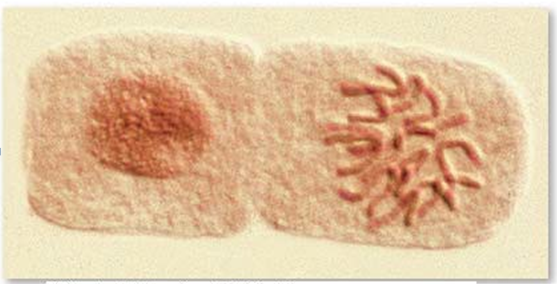In a biology lab exercise, you are asked to examine cells of a growing onion root tip that has been sectioned to show many cells. In most of the cells, you easily see the circular or oval nucleus as a uniformly filled space in a membrane outline. In a small percentage of cells, you see chromosomes as distinct strands just as cell division begins, and as it progresses, because the chromatin

A. becomes less tightly wound, to facilitate cell division.
B. increases in length, as replication adds DNA sections to the original.
C. becomes more tightly folded, increasing their visible length.
D. becomes less tightly folded, increasing their visible length.
E. becomes more tightly wound, to protect DNA, and to more easily manage cell division.
E. becomes more tightly wound, to protect DNA, and to more easily manage cell division.
You might also like to view...
Consider a pizza dough made by vigorously mixing to form gluten and evenly disperse the ingredients such as baker's yeast (Saccharomyces cerevisiae)
Predict the metabolic differences yeast would have in a thinly flattened dough and in a spherical dough ball. What will be an ideal response?
Orchids, which grow well in regions that are hot and dry during the day and cool at night, are classified as CAM
plants.
a. True b. False
The gut-brain axis refers to
A. the location of dormant viruses that infect both the gut and the brain. B. pores in the blood-brain barrier that permit the passage of glucose and other nutrients. C. neurons in the spinal cord that connect the gut and the brain. D. changes in brain chemistry and behavior caused by the gut microbiota.
Worker honeybees are
A) immature bees of either sex. B) fertile females. C) fertile males. D) sterile males. E) sterile females.